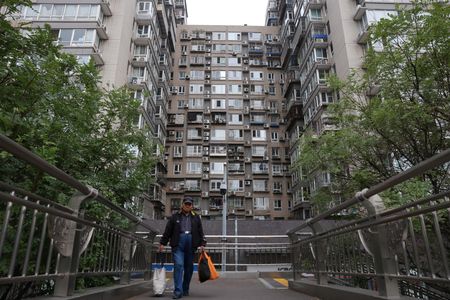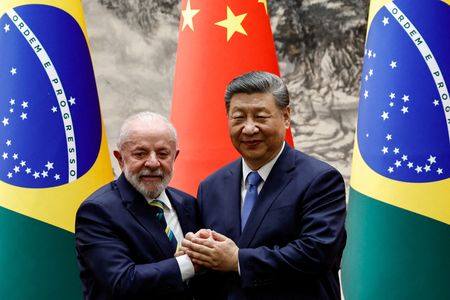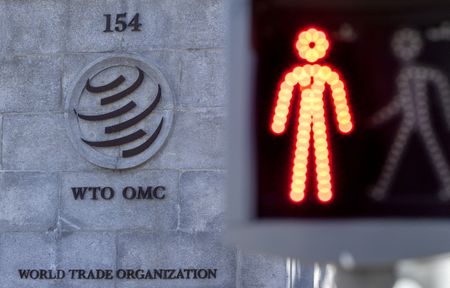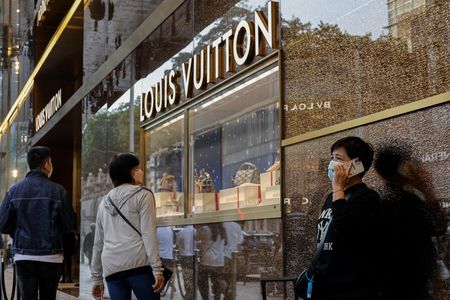By Liangping Gao and Clare Jim
BEIJING/HONG KONG (Reuters) – Key tools China introduced last year to stabilise the property market are making very little impact, pressuring Beijing to find new solutions for the crisis-hit sector, which analysts say must involve large-scale direct state purchases of empty apartments.
In what officials touted as a “historic” turning point for China’s property market, the People’s Bank of China (PBOC)announced in May 2024 a 300 billion yuan ($41.4 billion) relending programme, meant to facilitate 500 billion yuan in loans to firms controlled by local governments to buy empty homes and repurpose them for affordable housing.
Authorities hoped this would help reduce the giant stock of unsold apartments and improve developers’ cash flows, allowing them to resume stalled projects in a virtuous circle that would halt the market’s severe downturn since 2021.
But by the end of September, only 16 billion yuan had been drawn from the facility.
Analysts say the design of this scheme overlooks financial and operational constraints that state-owned firms (SOEs) find hard to overcome. But reducing housing inventory is key to arresting the decline of the property sector, prompting suggestions from some economists for the tool to be replaced or complemented by fiscal intervention for apartment purchases.
Updated data for the end of December was expected to be released along with the PBOC’s quarterly report on the usage of its structural tools last week. Its absence further fuelled suspicions that this tool was not working as swiftly as intended.
“It does suggest that the PBOC thought there was something potentially embarrassing or sensitive in this data,” said Christopher Beddor, deputy China research director at Gavekal Dragonomics.
“It’s pretty clear in retrospect that May 2024 was not the major turning point for the property sector that it was hyped up to be.”
A person from the central bank’s media department couldn’t confirm whether or when new data on the relending facility would be released. The PBOC did not immediately respond to separate questions on this tool’s efficiency and future plans.
A second property rescue programme is also progressing slowly. A move last year allowing local governments to use special debt to repurchase idle land from developers has only led to few small-sized deals, with property firms saying officials only want parcels with high returns potential.
The tools were designed so that any purchases by state entities are driven by financial considerations, thus limiting the moral hazard risk of authorities picking which developers to support, having bashed the industry for irresponsible expansion.
In practice, however, financing costs often surpass expected returns, as rental yields have been vanishing across China.
This raises the risk that the tools cannot significantly reduce the giant inventory of empty homes, which will keep weighing on prices and building activity.
Falling prices make households feel less wealthy and more reluctant to spend, raising growth and deflation risks at a time when Beijing is fighting a damaging trade war with Washington.
“The two main constraints, which are moral hazard and investment returns, limit the pace at which local governments can use relending or special bonds to purchase inventory,” said Robin Xing, Morgan Stanley’s chief China economist.
Xing estimates that China needs to implement about 10 trillion yuan worth of reforms within two years to avoid deflation, of which 3 trillion should be spent on real estate and the rest on social welfare.
The property measures should focus on at least halving the inventory of newly-built, unsold homes in China’s 30 largest cities from 3 million units currently, Xing said, adding that authorities should buy apartments as part of a fiscal programme, unconstrained by their financial returns potential.
“The country’s potential fiscal space can accommodate this, but it requires the central government to recognise this need and adjust existing mindsets,” he said. “It can no longer be constrained by aversion to moral hazard.”
FINANCIALLY UNFEASIBLE
With housing supply in excess and demographics in decline, average rental yields in China are below 2% and falling. Even before accounting for vacancy risks, the SOEs’ financing costs for the affordable housing scheme don’t add up.
The PBOC’s relending facility gives commercial banks loans at 1.75% interest. The lenders then add a risk premium, typically around 50 basis points.
To make the finances work, SOEs are offering prices at least 40% below market, say developers, adding they instantly reject the bids.
Even if starved for cash, developers have reason to hold their ground, analysts say. They expect Beijing will do anything it can to stabilise home prices at much higher levels than what SOEs currently offer, given the damaging implications a steep drop would have on the wider economy.
“If developers sell some buildings to the local government at a 50% discount, how would the homeowners in that area think about the future price of their homes?” said John Lam, head of Greater China property research at UBS Investment Bank.
“The government thinks this is only worth half the price, doesn’t that mean I should quickly sell my house?”
Similar financial considerations apply to special debt-funded repurchases of idle land. In a February 12 report, China Real Estate Information Corporation calculated known purchases at only 17.1 billion yuan from seven cities.
Developers say SOEs are only interested in land with high potential returns.
“But if my land is good quality I wouldn’t have any problem selling it to anyone, right? We wouldn’t need this special bond programme,” said one developer who asked for anonymity due to the topic’s sensitivity.
Then there are operational difficulties.
Looking to limit property management costs, SOEs are searching for completed, fully-vacant projects. These are scarce, because Chinese developers typically use pre-sales to fund construction.
“Even if you lower interest rates, the operational challenges remain,” said Wang Yi, who leads the China real estate team at Goldman Sachs Research.
Wang says a programme to modernise underdeveloped city areas known as urban villages could be “a better path to reducing inventory” than the relending facility.
Like Morgan Stanley’s Xing, Lam at UBS says the solution might be for the central government to coordinate acquisitions without worrying about the cost, but doubts it would happen.
“Once state losses are no longer a concern, you run into many grey areas,” he said. “The probability…is very low.”
($1 = 7.3079 Chinese yuan renminbi)
(Additional reporting by Kevin Yao,Shuyan Wang, Binbin Huang and Ziyi Tang in Beijing; Editing by Marius Zaharia and Shri Navaratnam)










